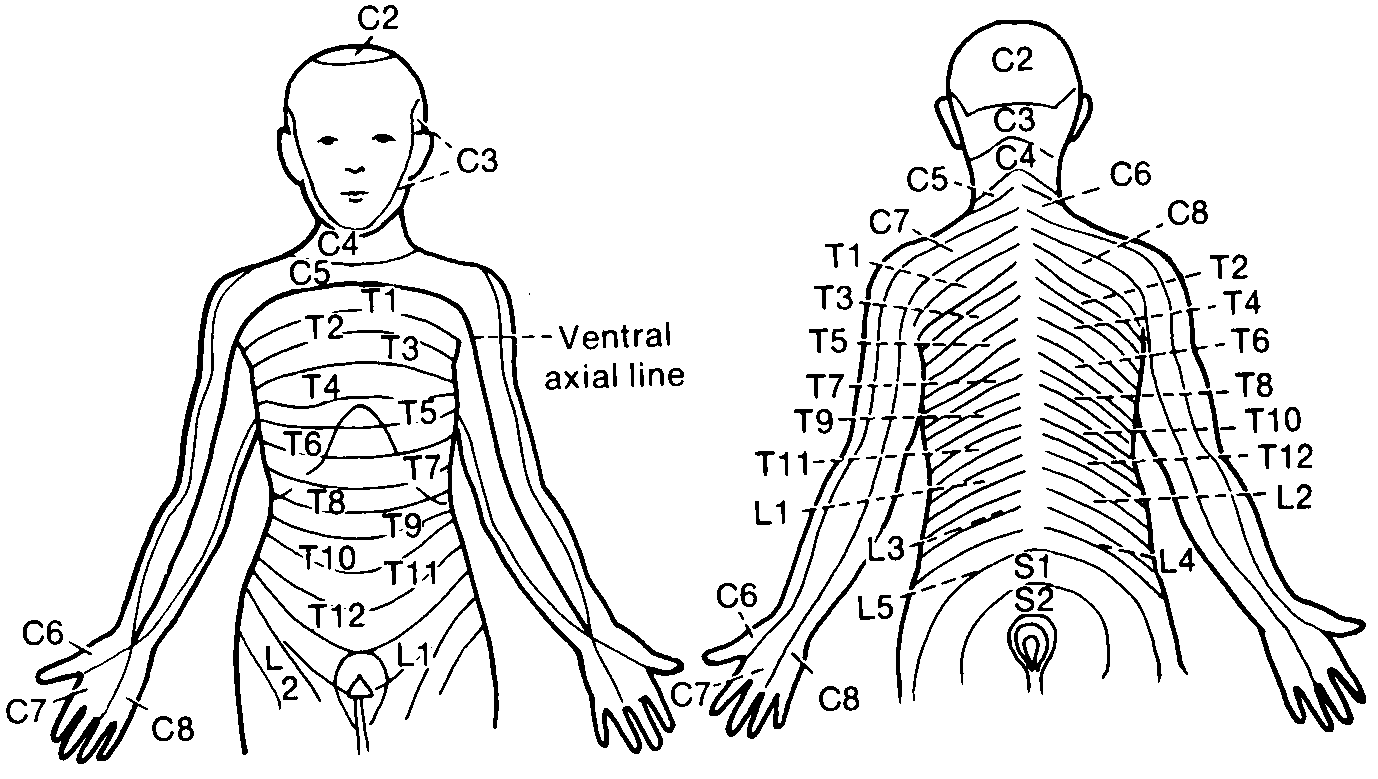The Segmental Innervation:
|
 |
||
| Figure 7.12 The dermatomes of the trunk and the upper extremity. Dermatomes not supplied by neighboring spinal segments meet at the ventral axial line (C5 and T1). From Keegan and Garrett (1948). |
is, of one dorsal root--supply a distinct part of the skin. The area of the skin supplied with sensory fibers from one spinal segment is called a dermatome. In the thorax and abdomen, dermatomes are shaped like circular belts; in the extremities, however, conditions are more complicated (figs. 7.12 and 7.13). Knowledge of the segmental innervation of the skin (and also of the segmental innervation of muscles and viscera, dealt with in Chapters 11 and 17) is of great practical value in clinical neurology. For example, if a dorsal root is interrupted, the skin sensation is reduced or abolished in the corresponding dermatome.
Because the dermatomes overlap, each spot on the skin is innervated by sensory fibers from at least two dorsal roots. Interruption of a single dorsal root therefore may not produce a clear-cut sensory deficit. Nevertheless, careful examination usually shows a narrow zone(centrally in the dermatome) where the cutaneous sensation to touch is slightly reduced and that for pain is abolished (analgesia). The usually more marked reduction in pain than in touch sensation is due to less extensive overlap of fibers coming from nociceptors than of fibers coming from low-threshold mechanoreceptors.